
1.Apsara
Combing Her Hair

2. Kandariya-Mahhadeva
Temple, India

3. Aphrodite Rising
from the Sea
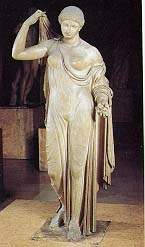
4. Aphrodite
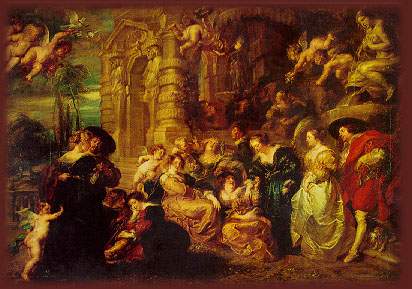
5. The Birth of
Venus
Traditional Concepts of Love: Idealist Conception of Love From the Courtly to the Romantic
|
1. merging of the lovers into one; --derived from religious mysticism or the union between man and God; --not through sex, but through the sudden exchange of glances, the touching of fingers, etc.; 2. the existence of magic; e.g. the arrows of Cupid 3. metaphysical |
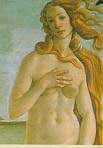
|
|
|
|
|
|
Courtly love--
- sexual love between men and women is in itself something splendid, an ideal worth striving for;
- love enobles both the lover and the beloved;
- being an ethical and aesthetic attainment, sexual love cannot be reduced to mere libidinal impulse;
- love pertains to courtesy and courtship but is not necessarily related to the institution of marriage;
- love is an intense, passionate relationship that establish a holy oneness between man and woman. (Singer 22-23)
John Donne-- . . . starting as a Catholic and ending as an Anglican prelate, in his youth an adventurous Dan Juan and in his maturity a devoted husband, Donne was singularly equipped to appreciate the contrasting attitutdes toward love.
In shakespeare the ideal of married love is more completely developed than ever before, while various Romantic concepts appear as if in a prliminary approximation (Singer xiv).
- two types of Venus (Rosaline & Juliet)
- the suffering of the
young couple serves as a Christ-like sacrifice eliminating evil by
means of love
the first courting sonnet in Romeo and Juliet--Before the sonnet (their first conversation), Romeo, like Byron in "She Walks in Beauty," compares Juliet to light or jewels at night and describes her as "true beauty," "beuty too rich for use, for earth too dear" (I.5 ll. 43-52). What kind of love (at first sight) is this? Religious and pure? Rashful? Bear in mind that Romeo goes to the ball to find his girlfriend Rosaline, but not Juliet. (Please go to Shakespeare page for other questions.) - Juliet: "My bounty is as boundless as the sea,/My love as deep; the more I give to thee, /The more I have, for both are infinite."--an incarnation of agape.
- The use of religious metaphors, their tryst at night, as well as the fact that their love is forbidden, put Romeo and Juiliet in the tradition of religious and courtly love (Singer 221).
Contemporary Interpretations of Courtly Love:
Cowboy Junkie's
- "White Sail" (lyric with notes);
- "Cold Tea Blues" (lyric
with notes) another song about love by Cowboy Junkie
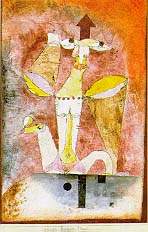
|
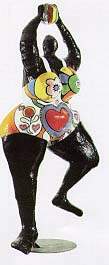
|

|